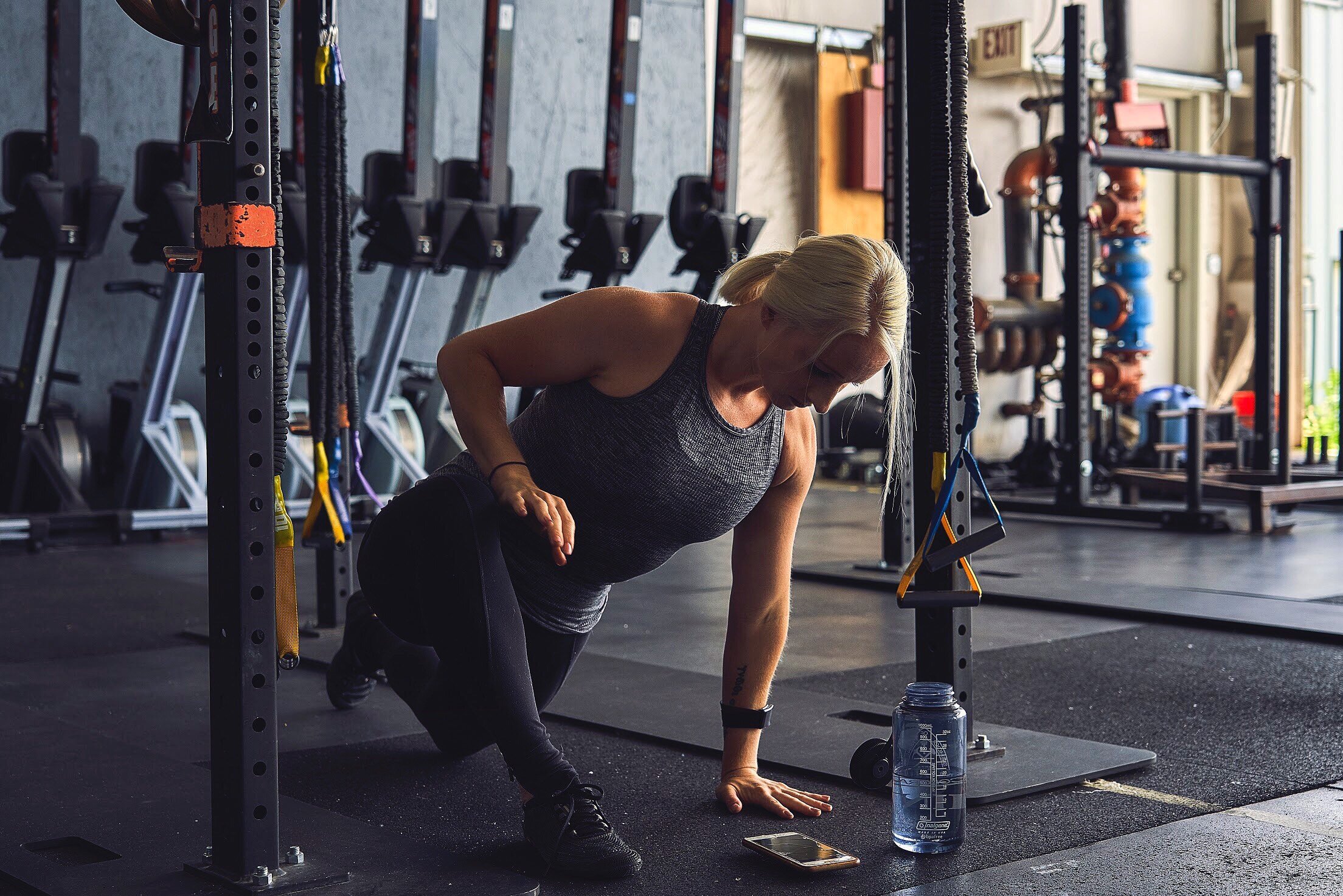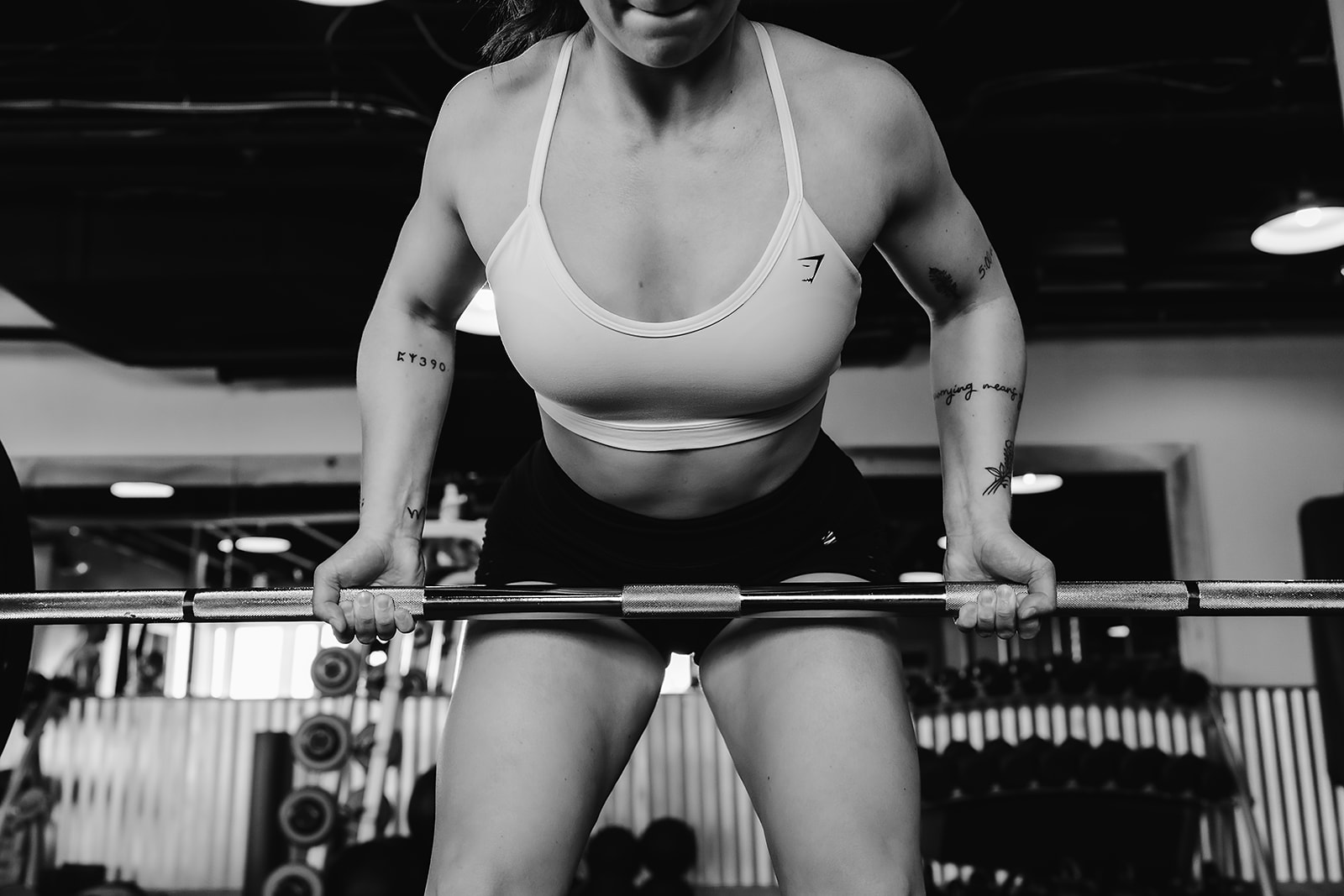In recent years, more research has been released on training around menstrual cycles. Women and people with periods are typically on a 28-35 day hormonal cycle whereas many men are on more of a 24 hour cycle. So while we with periods don’t need completely different training programs, we will respond differently to exercise and feel stronger or weaker during specific parts of our cycle.
Does Exercise Help Period Cramps?
The absolute worst part about having a period. While Midol is a saving grace for us sometimes, we also like to consider that regular use of NSAIDs can disrupt the gut microbiome over time, so it’s always good to also consider other options when you can. Some natural supplements and herbs people have had success with are magnesium, caffeine, or a good quality CBD oil. Also, you can help dull cramps with a good old fashioned heating pad.
Does training help with cramps? Studies have shown that certain types of exercise can reduce cramps and pain during your period, but everyone is individual. It seems that what is more important than exercising during your period is regular exercise at all points of your life in order to manage and help with painful periods.
The Phases of a Menstrual Cycle
Bleed week
Let’s start with the worst part, shall we?
Bleed week can cause cramps and make us want to skip our training sessions. If you need a rest day or two, take it. Walking is honestly a great form of exercise if the cramps are intense for a day or two. This portion of our cycle leads us in, however, to our follicular phase.
Follicular Phase
When the follicular phase begins, levels of estrogen and progesterone are low. As a result, the top layers of the thickened lining of the uterus break down and are shed, and menstrual bleeding occurs. As we move through the follicular phase, we develop fluid sacs or follicles that contain eggs and estrogen levels begin to rise.
This is generally when you’re going to feel the strongest. If you can focus your higher intensities or higher volume sessions here, that’s a great plan for most people. You’ll probably feel pretty strong during this time and it’s a great time to eat some extra food.
Luteal Phase
The ovulatory phase begins when you start ovulating and estrogen levels begin to decrease and progesterone starts to increase. During the luteal phase (which started with ovulation), progesterone is going to peak and drop again.
You’ll probably still feel decently strong during ovulation, but the days and week after that you may start to feel a decline in energy and strength – usually the week leading up to the period. You may experience bloating, maybe slight mood alterations, and lower energy levels. Listen to your body and moderate the intensity in your workouts. You don’t have to go super light or take it super easy, but if you were aiming for a one rep max PR this week it probably isn’t going to happen.
The week before your period you are also going to feel hungrier and you can lean into this and eat more food. Some have suggested 10-15% more calories to prepare for bleed week, though you can be very intuitive with this and see how you feel.
There is some research that suggests women may be at greater risk for injury in this part of the cycle. This is due to increased joint laxity which is at its peak during ovulation. However, studies also suggest this injury is more likely to happen during contact sports or sports with a lot of change in direction (cutting, dodging, sprinting) due to high strain on the ACL joint.

Bloating
Every person is different when it comes to bloating and cramps and the time of month. Some people bloat the week before and some bloat the week of their cycles. Don’t take it to heart. If you’re a few pounds heavier on those days, it will drop back down. The scale never tells the whole story.
Amenorrhea
We want to also touch on a more serious matter, especially within the health and fitness industry at a competitive level.
For those who plan on competing in figure or bikini competitions, or just looking to get shredded, there is a risk of losing your period altogether. Amenorrhea, or the loss of your period, has become a common and sometimes well-accepted occurrence for women at extremely low body-fat levels.
Some athletes believe it’s a normal part of strength training, but it isn’t although it can be common at elite levels. At times it can be unavoidable, but properly fueling your body when at high physical activity levels can help.
If you are chronically under-eating and you end up depriving your body of the fuel it needs to carry out its normal functions, which includes energy for strength training and reproductive functions, please seek assistance from a qualified dietitian or nutrition specialist. Amenorrhea has been linked with loss of bone mineral density, which increases risk for osteoporosis. And as women, we have a greater risk for it.
Training Around Your Menstrual Cycle
Take note of what’s going on with your period and your training and take advantage of days when you feel stronger and give yourself grace on days you’re feeling weaker. As you track you can start to recognize those patterns and feel better about the shit days and go harder on the good days.
People with periods don’t need special training programs. Nothing changes about the rep ranges or the exercises overall, but the intensity and frequency of training can be optimized for monthly menstrual cycles.
Prefer to listen to this article instead? Check out our podcast episode on Your Menstrual Cycle and Training.
If you want to learn more about exercise & fitness, check out the fitness programs we offer!



